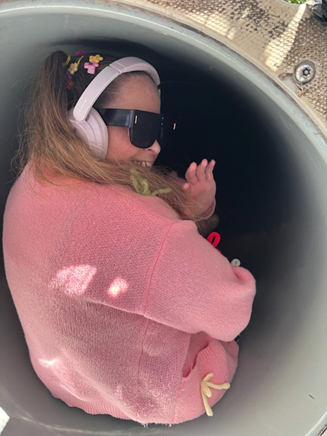Making Spaces Truly Inclusive: Addressing Accessibility Gaps for People Living with Disability
- Wellness Australia Group

- 3 days ago
- 3 min read
When we talk about inclusion, it’s important to recognize that accessibility goes far beyond the presence of a ramp or a designated toilet. It’s about ensuring that every person — regardless of their mobility, sensory, cognitive, or communication needs — can participate fully and independently in everyday life.
Unfortunately, many public spaces, homes, and services still fall short. Bec, a passionate advocate living with disability, has shared several lived experiences that highlight these ongoing issues. Her story reflects a broader pattern of neglect — one that must be addressed if we’re serious about creating a more inclusive society.
Parks and Public Spaces: Narrow Paths, No Right of Way
Public parks should be spaces where everyone can enjoy nature, fresh air, and community. But for many wheelchair users, narrow paths and poor infrastructure make even a simple walk impossible.
Too often, there is no designated right of way for wheelchair users, forcing people into uncomfortable — or even dangerous — situations when others are unable or unwilling to move aside. Wider paths, clear signage, and thoughtful design can go a long way in fixing this.
Picnic areas are another barrier. Standard picnic tables frequently lack space for wheelchair users to pull up and sit comfortably with friends or family. It’s a small change that can make a massive difference in inclusion.
Accessible Toilets: Design Fails That Exclude
Accessible toilets are meant to provide dignity and independence — but often do the opposite due to poor design and maintenance.
Some of the most concerning issues include:
No sanitary bins provided for disposing of pads or continence aids.
No soap or handwashing facilities — compromising hygiene and health.
Accessible toilets located within gendered bathrooms — which can exclude people with support workers of a different gender. This forces some to either enter a space that makes them unsafe or avoid the bathroom entirely.
At one venue, it was noted that the arcade and pool table area had plenty of space, yet the accessible bathroom facilities were subpar. This highlights that accessibility isn’t about space limitations — it’s about priorities. Venues and facilities must consider a redesign to ensure accessibility is central to all planning.
Theme Parks: Rides That Leave People Behind
Theme parks are built to bring joy — but for individuals who are wheelchair-bound or unable to stand-transfer, many rides are completely inaccessible. This is not just a missed opportunity; it's exclusion by design.
While ride safety is critical, accessible ride options could and should be explored. Modified seating, ride simulators, or separate accessible versions of popular rides could allow everyone to participate in the fun. Everyone deserves to feel the thrill and joy of a theme park visit — not just those who can walk unaided.
SIL Housing: Independence Undermined by Inaccessible Design
Supported Independent Living (SIL) homes are supposed to foster independence. But too often, they don’t meet even the basic standards for accessibility.
Bec shared that in one SIL house:
Bathroom rails were missing — and she had to install them herself.
Kitchen cupboards were unreachable, making food prep impossible without assistance.
There were no concrete paths outside, causing her wheelchair to get bogged in the grass.
These are not luxuries — they are necessities. Every SIL house should meet universal design principles, providing independence with dignity.
Invisible Barriers: Social Anxiety and Communication Differences
Accessibility isn’t just physical. People with social anxiety, ADHD, autism, or other communication differences often face invisible barriers that make public spaces overwhelming or inaccessible.
Simple, inclusive changes include:
Quiet spaces in public venues for sensory regulation.
Clear signage and visual aids to reduce anxiety and confusion.
Training staff to use respectful, patient, and inclusive communication strategies.
True inclusion considers not just mobility — but emotional and cognitive accessibility as well.
Moving Forward: Inclusive Design, Not Afterthoughts
The issues raised by Beck and others with lived experience highlight a simple truth: inclusion cannot be an afterthought. It must be built into the core of every service, space, and policy.
Here's what needs to happen:
Engage people with disabilities in the design process.
Audit public and private spaces through an accessibility lens — physical, cognitive, and emotional.
Ensure ongoing maintenance of accessible features like toilets, pathways, and handrails.
Create legislation that enforces universal design standards in SIL housing, recreational venues, and public services.
Every person deserves to navigate the world freely, safely, and with dignity. Let’s move beyond compliance — and aim for true inclusion.
Connect with Wellness Australia Group to keep the conversation going and what we can collectively do as a community of voices as we are stronger together.
Join our local community program and receive updates and discounts at any of our social enterprises, invitations to events where we share our passions and create ongoing positive change. www.wellnessaustraliagroup.com.au or email info@wellnessaustraliagroup.com.au to find out more.



